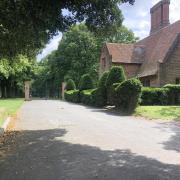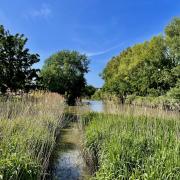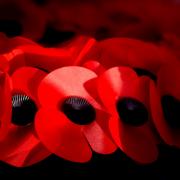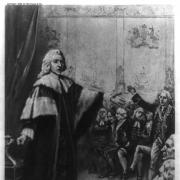As The Battle of Britain Memorial marks its 30th anniversary, we look back at the stories of its remarkable aircrew who inspired its creation by fighting in the air for our freedom
These days it’s a reminder of how close we are, geographically at least, to our European neighbours, but anyone looking across that same stretch of water 83 years ago would have felt a sense of apprehension, if not fear.
Following the Battle of France and the evacuation of almost 340,000 British and Allied soldiers from Dunkirk, that thin stretch of water was all that stood between this island and the Nazi forces – and Kent was first in the literal firing line.
Wartime Prime Minister Winston Churchill summed up the threat the country faced when he told the House of Commons on 18 June 1940: “What General Weygand called the Battle of France is over. I expect that the Battle of Britain is about to begin.”

It did indeed begin less than a month later, although the dates were not actually fixed until 1945, when the award of the Battle of Britain Clasp was announced. Air Chief Marshal Sir Hugh Dowding’s favoured dates of 10 July to 31 October 1940 were adopted although they were, as he admitted, somewhat arbitrary.
The battle, one of the most significant fought by this country in the whole of the 20th century, played out mainly, though not exclusively, over Kent and the South East.
The men who fought it, known forever as “the Few” after another of Churchill’s orations in which he asserted “Never in the field of human conflict was so much owed by so many to so few”, included many who were fighting to defend not just their homeland, but their home county of Kent.
Accurate statistics around the Battle are difficult to come by, with record-keeping in the pre-computerised 1940s far less precise than today, but the current best estimate by the Battle of Britain Memorial Trust is that some 65 aircrew hailed from the county.
They include those who became an Ace by shooting down five or more enemy aircraft, such as Tankerton-born George Ball, and those who had less distinguished careers but still played their part in preventing an invasion.
They are remembered, alongside the rest of the aircrew of RAF Fighter Command who took part in the conflict that changed history, at Capel-le-Ferne, just outside Folkestone on Kent’s famous White Cliffs, where the site’s central feature, the National Memorial to the Few, this year celebrates its 30th anniversary.

The Memorial was unveiled by Her Majesty Queen Elizabeth The Queen Mother in July 1993 in weather that was a far cry from the blue skies and sunshine that allowed the Luftwaffe to make the short journey across the Channel with ease in 1940.
The story goes that the pilot of the helicopter carrying Her Majesty to the unveiling pointed out that the weather was getting worse rather than better and suggested she might like to turn back. “My boys never turned back in 1940; we press on,” she is said to have replied.
Apocryphal or not, the story sums up both the Queen Mother’s indomitable spirit and that of the men to which she was referring, the fewer-than 3,000 who stood firm against the threat of invasion and in doing so allowed the D-Day fleet to assemble on the south coast four years later before the re-taking of mainland Europe.
Serious scholars will not risk putting an accurate figure on the number of the Few, record-keeping being a somewhat less exact affair on squadrons that were having their runways bombed day after day than it is now. A figure of around “2,940-something” is all that the Battle of Britain Memorial Trust, caretakers of the Memorial, will confirm.
One of those, George Ball, joined No 19 squadron at Duxford on 19 February 1938, and was still with the squadron in May 1940 during the Battle of France. He destroyed a Messerschmitt Bf109 but was wounded in doing so over Dunkirk on the 26th.
During the night of 18/19 June, Flying Officer Ball shot down a Heinkel He111 north of Colchester, a week before he joined No 242 Squadron at Coltishall as A Flight Commander with the rank of Acting Flight Lieutenant. On 30 August he destroyed an He111, shared another and damaged a Messerschmitt Bf110.
A week later he destroyed a Bf110 and damaged a BF109, on 9 September he destroyed a Bf 109, on the 18th destroyed a Junkers Ju88 and on the 27th damaged another BF109, a run of successes that saw him awarded the DFC on I October 1940.
It wasn’t all plain sailing for the Kent airman, though. In April 1941, serving with No 73 Squadron in the western desert, he flew into a sandstorm and was forced down and taken prisoner, being held for a time in Stalag Luft 3. After his release and return to the RAF Ball commanded No 222 squadron and was killed in a flying accident in 1946.

Another Kent airman who served in the Battle was Arthur Aslett, who was born in 1920 and began work in 1934 as an apprentice printer with a Kent newspaper.
In early 1939 Aslett joined the aircraft crew section of the Royal Air Force Volunteer Reserve (RAFVR) to train as a wireless operator/air gunner at Rochester. Called up on 5 September of that year, he joined No 235 Squadron.
Sergeant Aslett was a member of a Blenheim crew which attacked two armed enemy merchant vessels on 23 November 1940, an attack which saw the pilot, Pilot Officer JT Davison, wounded and the aircraft sufficiently damaged to make a crash landing at base the only option. What the crew didn’t realise was that a bomb had remained on the rack, and as the Blenheim landed heavily the bomb exploded, severely injuring Sgt Aslett and setting fire to the aircraft.
Davison and his observer Sergeant Brazier jumped clear, but on realising that Aslett was still in the burning aircraft they went back and dragged him out. Both men were badly burned in the process and their gallantry was rewarded with a George Medal for Davison and a British Empire Medal for Brazier.
It is because the Few includes men like Aslett, who served in multi-crewed aircraft, that the Trust is careful to refer to the men whose names are engraved on the Christopher Foxley-Norris Memorial Wall at Capel-le-Ferne as ‘aircrew’ rather than pilots.
The names on the black granite wall are listed without rank or decoration, highlighting the fact that they all played their part, whether they became a household name like Douglas Bader – under whom George Ball served – or were lost on their first sortie. It’s the reason the enigmatic airman figure atop the National Memorial to the Few wears an Irvin Jacket, hiding his rank and nationality.
That anonymous figure sits at the heart of a white, three-bladed propeller set into the ground and extending out across the peaceful grass Memorial site. Previously best seen from the air, the propeller can now be seen from the balcony of the first floor café at The Wing, the visitor centre unveiled in 2015 by Her Majesty The Queen and His Royal Highness the Duke of Edinburgh.
Other outside exhibits at this exciting and yet calm place of pilgrimage include replicas of the two most famous aircraft of the Battle, the Spitfire and Hurricane, while The Wing houses the interactive, high-tech, Scramble Experience.
While the Memorial has grown since the airman statue was unveiled 30 years ago, it remains faithful to its mission to remember those who served in the Battle of Britain; men like Keith Gillman, nicknamed ‘Colt’, who was born in Dover in 1920 and attended the County School there.
After finishing his training, he joined No 32 squadron at Biggin Hill on 18 May 1940, claimed a BF109 probably destroyed on 19 July 19 and destroyed another on 24 August. The following day Pilot Officer Gillman did not return from a combat off Dover and was reported missing. He was 19.
battleofbritainmemorial.org








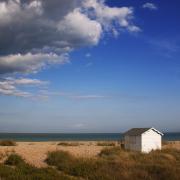



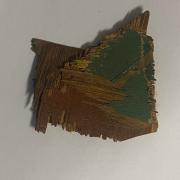



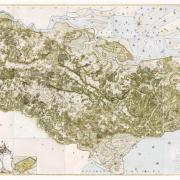
![The torchlit Wassail procession makes its way to the New Ash Green Community orchard [Photo courtesy of New Ash Green Woodlands Group]](/resources/images/128x89/1x/17558355.jpg)
![The torchlit Wassail procession makes its way to the New Ash Green Community orchard [Photo courtesy of New Ash Green Woodlands Group]](/resources/images/180x180/1x/17558355.jpg)

